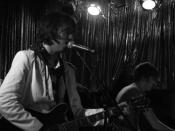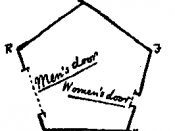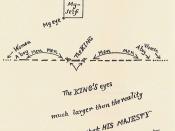Vincent Weitoish
Edmondson - 3rd
January 2, 2003
Flatland is a very interesting and thought-provoking book about A. Square's adventures in lands of different dimensions. A. Square, a mathematician in a two-dimensional world, visits Spaceland, a land of three-dimension, Lineland, a land of one dimension, and Pointland, a land of no dimensions.
The book begins when A. Square tells us about flatland, what it is, and its history. He begins by telling us what Flatland and its people look like. He says that every offspring has one more side than its father, so a square will have a pentagon as a son. Also the women are just lines and are very dangerous because they ca kill people with their point. He tells us of the different classes that the people of Flatland are divided into, the lowest being the triangles with a few exceptions, the isosceles and equilateral are higher in class, then the squares, pentagons, hexagons etc.
Ultimately leading up to the circles which are the priests but can only be seen as short lines. This leads to the dispute over the Universal Color Bill.
After telling us about the people of Flatland A. Square tells us about the history and politics of Flatland. He tells us about the role of color in Flatland. In the past there was a burst of color in Flatland with people coloring themselves so you could tell which side you are looking at easier. But that didn't last long; soon Flatland lost its color again. But now the isosceles triangles, which are gaining more power every day, proposed the Universal Color Bill. This started a great debate because the bill proposed coloring women red and green but also coloring the priests, which are circles therefore appearing to Flatlanders as shorter...



Comment on book report on Abbot's Flatland
This is a good report. Well written and easy to follow. Good introduction to what the book was about, at least it gives the reader an insight into the book before getting into the details.
7 out of 7 people found this comment useful.